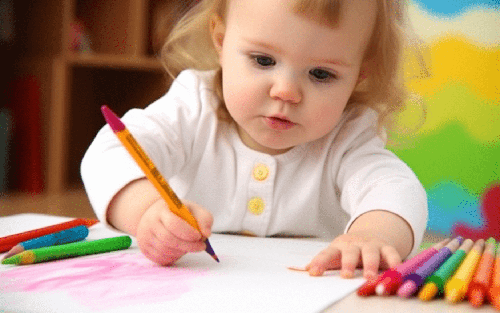The Role of Art in Developing Fine Motor Skills in Children
 Art is not just a fun and creative activity for children, it also plays a vital role in developing their fine motor skills. Fine motor skills are the small movements of the hands and fingers that enable us to do things like write, draw, and button our clothes. These skills are essential for a child's overall development and success in school and life.
Art activities such as drawing, painting, and coloring require children to use their fine motor skills to hold and manipulate a variety of materials. This helps to strengthen the muscles in their hands and fingers, improving their dexterity and control. As children practice these skills, they become more proficient in other activities that require fine motor skills, such as writing and playing instruments.
Art also helps to develop hand-eye coordination, which is the ability to coordinate the movements of the hands and eyes. This skill is essential for many everyday tasks, such as catching a ball, threading a needle, and using utensils. Art activities require children to look at what they are drawing or painting and then use their hands to create the image. This helps to strengthen the connection between their eyes and hands, improving their hand-eye coordination.
In addition to developing fine motor skills and hand-eye coordination, art is also a great way for children to express themselves and explore their creativity. Through art, children can learn to communicate their thoughts and feelings in a safe and non-judgmental environment. This can help to build their confidence and self-esteem, which are essential for success in all areas of life.
In conclusion, art is not just a fun activity for children, it plays a vital role in their overall development. By providing children with opportunities to engage in art activities, parents can help to strengthen their fine motor skills, hand-eye coordination, and creativity.
Art is not just a fun and creative activity for children, it also plays a vital role in developing their fine motor skills. Fine motor skills are the small movements of the hands and fingers that enable us to do things like write, draw, and button our clothes. These skills are essential for a child's overall development and success in school and life.
Art activities such as drawing, painting, and coloring require children to use their fine motor skills to hold and manipulate a variety of materials. This helps to strengthen the muscles in their hands and fingers, improving their dexterity and control. As children practice these skills, they become more proficient in other activities that require fine motor skills, such as writing and playing instruments.
Art also helps to develop hand-eye coordination, which is the ability to coordinate the movements of the hands and eyes. This skill is essential for many everyday tasks, such as catching a ball, threading a needle, and using utensils. Art activities require children to look at what they are drawing or painting and then use their hands to create the image. This helps to strengthen the connection between their eyes and hands, improving their hand-eye coordination.
In addition to developing fine motor skills and hand-eye coordination, art is also a great way for children to express themselves and explore their creativity. Through art, children can learn to communicate their thoughts and feelings in a safe and non-judgmental environment. This can help to build their confidence and self-esteem, which are essential for success in all areas of life.
In conclusion, art is not just a fun activity for children, it plays a vital role in their overall development. By providing children with opportunities to engage in art activities, parents can help to strengthen their fine motor skills, hand-eye coordination, and creativity.


